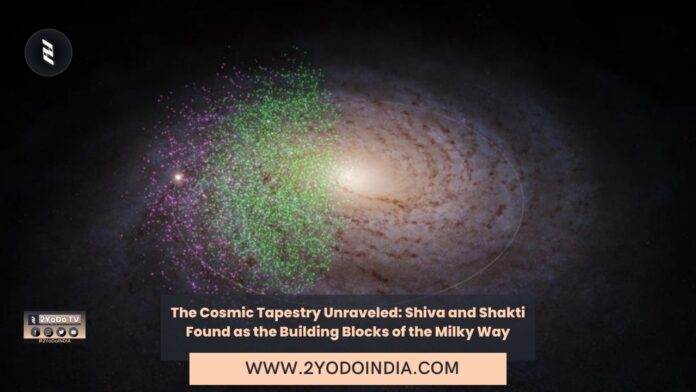Max Planck Institute for Astronomy announce that astronomers have discover what could be the earliest building blocks of the Milky Way, call as “Shiva” and “Shakti. These seem to be the remnants of the two galaxies that merge between 12 and 13 billion years ago with an earlier version of the Milky Way, contributing to its growth.
Astronomers from the Max Planck Institute for Astronomy name as the components Shakti and Shiva and identified them after combining data from the European Space Agency’s Gaia satellite and the SDSS survey.
This can be thought of like finding traces of an initial settlement that eventually grew into a metropolitan city, albeit on a cosmic scale.
The collisions and mergers of galaxies put many things in motion.
Every galaxy will carry its own reservoir of hydrogen gas and when colliding, these clouds are de-stabilise and many new stars will be form inside.
Both the galaxies will have their own sets of stars before they collide and these “accreted stars” will only account for some of the stellar population that forms the newly-combine galaxy.
The tricky part is identifying which stars came from which predecessor galaxy when the merger is done.
But basic physics provides the clues.
When galaxies collide and their stars mingle, most of the stars retain some basic properties which are link to the speed and direction of the galaxy they originally came from.
Stars that were from the same predecessor galaxies share similar values of energy and what scientists call angular momentum, the momentum associated with their rotation.
Both angular momentum and energy are conserve for stars moving in a galaxy’s gravitational field.
Astronomers look at Gaia data combine with stellar spectra data from the Sloan Digital Sky Survey.
SDSS provide detail information about the stars’ chemical compositions.
Researcher said :
“We observe that, for a certain range of metal-poor stars, stars were crowd around two specific combinations of energy and angular momentum,”.
For their present search, Malhan and Rix use Gaia data combine with detail stellar spectra from the Sloan Digital Sky Survey (DR17).
The latter provide detail information about the stars’ chemical composition.
“We observe that, for a certain range of metal-poor stars, stars were crowd around two specific combinations of energy and angular momentum.
Khyati Malhan, in a press statement said :
“Shakti and Shiva might be the first two additions to the ‘poor old heart’ of our Milky Way, initiating its growth towards a large galaxy,”.
It was Malhan that name the two constituent galaxies Shiva and Shakti.





